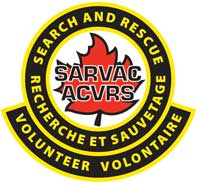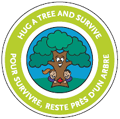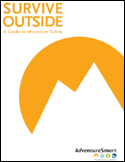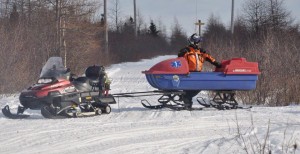
The Search & Rescue Volunteer Association of Canada has partnered with AdventureSmart to collectively provide education and awareness programs. Canada’s diverse landscape offers an extraordinary environment and wealth of opportunities for a wide variety of age groups to pursue outdoor recreational activities of all kinds – year round.
While many Canadians take advantage of our great outdoors, sadly there are approximately 10,000 incidents annually in Canada. The majority are marine related (6,000 alone in oceans and Great Lakes), with a break down of 1,000 in aeronautical, over 2,000 in ground search and rescue and 800 humanitarians. These incidents involve people who have reportedly run into trouble while participating in outdoor activities. Unfortunately, the number of SAR incidents across Canada is increasing at an alarming rate annually.
Through education, literature, and simple word of mouth, the AdventureSmart program aims to convey one simple message to outdoor adventure seekers: “Get informed and go outdoors”!
Programs Offerred
Hug-a-Tree and Survive
Hug-a-Tree is an AdventureSmart program that helps lost children survive in the woods. This presentation is aimed at children in Grades K-5. It teaches children how not to become lost in the woods, and what to do if they should become lost.

Originally developed in the United States following the search for Jimmy Beveridge in 1981, Hug-a-Tree and Survive was adapted for Canadian use by the RCMP. Using a short (17 minute) video and/or other demonstrations and games, AdventureSmart presenters share their knowledge of valuable outdoor survival and life lessons.
There are four simple rules that are core to Hug-a-Tree presentations:
- Tell an adult where you are going.
- If you are lost, “Hug-A-Tree” and stay put.
- Keep warm and dry.
- Help searchers find you by answering their calls.
About the video: The video features John who is so excited to explore; he loses his way. Once he realizes he is lost, John uses his head to stay safe and he is well prepared!
Would you like to receive this program at your school or community group? Click here to contact us.
Survive Outside
Statistics show that each year across Canada there are approximately 5000 ground Search and Rescue incidents. They involve all types of outdoor enthusiasts, from hikers and skiers to backcountry travellers and boaters.
 AdventureSmart encourages you to have fun and play, but always be informed and prepared before you set out. Time spent gaining this extra knowledge and skills can help reverse the SAR incident trend.
AdventureSmart encourages you to have fun and play, but always be informed and prepared before you set out. Time spent gaining this extra knowledge and skills can help reverse the SAR incident trend.
Three steps to safety outside …
By following three easy steps, AdventureSmart believes that outdoor recreationalists will significantly improve their chances of survival should they become lost or in distress.
- Trip Planning. Plan your travel route. Know the terrain and conditions. Check the weather and always fill out a trip plan.
- Training. Obtain the knowledge and skills you need before heading out. Know and stay within your limits.
- Taking the Essentials. Always carry these essentials, and know how to use them. Add other equipment specific to your chosen activity, season and location.
Learn more about Outdoor Safety
The Survive Outside program offered by AdventureSmart is a great way to learn the value of preparation for safety in outdoor activities. Augment your basic outdoor survival knowledge by taking the “Survive Outside- A Guide to Outdoor Safety,” program offered by AdventureSmart.
- The value of planning—a cautionary tale…
Follow our imaginary hiker Jo as she heads into the hills and illustrates each of the key elements of outdoor safety. - The trip plan
Complete a trip plan and leave it with someone you trust so a search and rescue team will know where to begin a search if you do not return at the intended time. - Outdoor travel tips
A summary of the most important outdoor survival considerations. - Taking the essentials
What survival items do you think should be carried in your pack for any outdoor adventure, whether the duration is a few hours or several days? - Search and rescue in Canada
The Canadian Search and Rescue system, how to alert them and what to expect
Survive Outside – Snowmobiling
This presentation is geared for snowmobilers and uses much of the content from Survive Outside adapted to winter conditions. Segments feature travel tips on both snow and ice, including critical information when travelling in avalanche terrain.

Take equipment specific to snowmobiling:
- Full-face helmet and goggles
- Warm, waterproof jacket & pants
- Thermal underwear with an extra thermal layer
- Warm gloves, socks & hat, with extras of each
- Avalanche transceiver, probe and shovel
- 50 ft length of rope – used in avalanche rescue or crevasse rescue
- Spare gas, belt, plugs and tools
